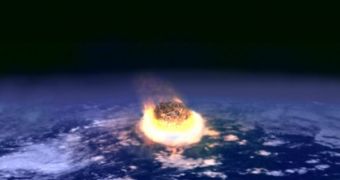Establishing what killed the dinosaurs is not an easy thing to do, and many ideas and proposals exist to explain why, some 65 million years ago, more than half of the planet's species, dinosaurs included, vanished from the face of it. A large portion of the scientific community believes that a comet impact, at the Chicxulub site, in the Yucatan Peninsula, just off Mexico, may have been responsible. A new proposal comes to dispute that claim and highlights that the Shiva Great Basin, in India, may have been the actual impact site, Space reports.
The new idea comes from Texas Tech University paleontologist Sankar Chatterjee, who believes that this is the impact site that caused the Earth-shattering chain of events that led to the Cretaceous–Tertiary (K-T) extinction event, the fifth scientists know about. The expert presented the idea on Sunday, at the annual meeting of the Geological Society of America. The conference was held in Portland, Oregon, and saw a large number of scientists voicing skepticism over the proposal.
“We have worked extensively throughout India and investigated a number of the localities where Sankar Chatterjee claims to have evidence of a large impact he calls Shiva crater. Unfortunately, we have found no evidence to support his claims. Sorry to say, this is all nonsense,” Gerta Keller, a geoscientist at the Princeton University, says in an e-mail, which she wrote with Swiss expert Thierry Adatte, from the Universite de Neuchatel. Keller is the investigator that has found signs of massive volcanic activity in the geological record, hinting that the K-T event may have been brought forth by the combined action of several factors, including volcanoes.
In the scientific community, a growing body of researchers believes that the extinction event was not brought forth by any one single event, such as the impact with a comet or asteroid, but through a combined approach. That is to say, it may be that an asteroid collision only caused a small series of events to take place, whereas an increased volcanic activity and earthquakes caused other events. Combined, these occurrences may have been strong enough to bring about the K-T event.

 14 DAY TRIAL //
14 DAY TRIAL //